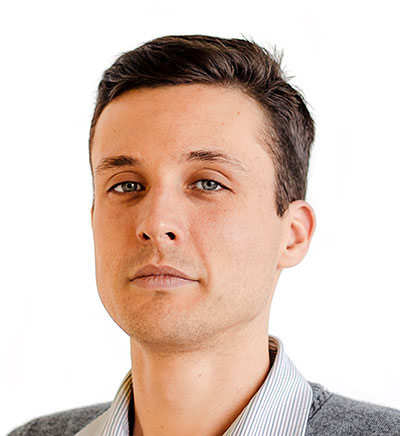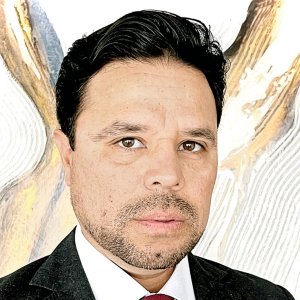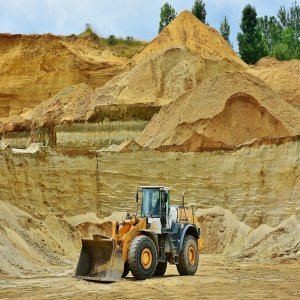Head in the Mine, Heart in the Community

Head in the Mine, Heart in the Community

Head in the Mine, Heart in the Community

STORY INLINE POST
Q: What is the story behind Las Chispas?
EF: Las Chispas is a do-it-again project. We created the first version of SilverCrest in 2003. We discovered, permitted, built and brought to production the Santa Elena mine in Sonora. In 2015, we completed a transaction with First Majestic Silver. They purchased the mine but not the properties that house it, which were spin out to our current company, SilverCrest Metals.
Las Chispas is adjacent to Santa Elena. We started drilling in 2016. As far as we know, it had never been drilled before. At the time, we knew of three veins. It is a common low-to-intermediate sulfidation epithermal system. There was some historic production there: about 80 to 100 million ounces of silver. The historical production grade was 15 grams per ton of gold and 1.7kg per ton of silver.
Q: What is the state of the project as of March 2020?
EF: We have over 400 people working at Las Chispas. Underground production is expected to commence in 2021. As of March 2020, we are running on two paths. One is production. We are completing a feasibility study, which will be completed in mid-2020. As a result, we can obtain a financing package and make a construction decision. Our target is to start construction in August 2020. Given a 14-month construction period, we expect production to kick off toward the end of 2021. The production part of the story is all about high grade. We have been ranked by the Royal Bank of Canada as one of the Top 3 highest grade silver and gold deposits in the world. This means we will have a high margin, leading to free cashflow, a lot of jobs and plenty of taxes for the Mexican government.
RF: The second part of the story is about exploration. We have over 30 veins on site at Las Chispas. About 15 of those will be taken into account for our feasibility study. It will be interesting to move forward and actually drill these other targets. People often drill for years, trying to get their resource and reserve numbers as high as they can before moving to production. Contrarily, we want to put Las Chispas into production and use some of the money it generates to continue with exploration. It is a dual growth pathway consisting of production and exploration.
Q: What are the main elements of your approach to community engagement?
ML: SilverCrest has a strong social license to operate around the Sonora River, where we have been working since 2003. The company has experience working with the community, which is open to mining. It helps that the team has remained the same through the years and our faces are familiar to the community. We provide employment: 80 percent of our workers are locals. By locals, we mean people from Arizpe, the municipality where Las Chispas is located, as well as other nearby towns like Banamichi and Aconchi. A number of locals had left for the US to find jobs. Others had been working at Cananea. Thanks to SilverCrest galvanizing the local economy, many of them have judged it beneficial to return to their communities of origin.
RF: We have focused on employing as many locals as possible. When we wanted to begin hiring, we brought in a local contractor for the underground and geo-tech work. They wanted to pull talent from all over Mexico and the southern US. Instead, we decided to go to the ejido. We made it clear that if they wanted to work for us, they would have to be disciplined. And we have never had any issues since. They show up every day right on time. We have trained them, and as of today, all of them are fully qualified geo-technicians. Some of them are at the point where they can use different platforms and programs for geological modeling and data processing. The Las Chispas project opened up a vast opportunity and the community took hold of it.
EF: You get a lot of mileage in Mexico if family is involved. I know this from experience. My son and daughter work in the company and I often bring my wife to ejido meetings. People appreciate personal involvement. This is in line with our policy of executive boots on the ground. I am in Mexico every month, like most of our executives. I haul samples from underground tests with the helpers and the geologists. I personally negotiated access to land and services with the families and the ejido. I am originally a cowboy from Montana, so I can talk to the locals about water and fencing. It is important to find common ground and relate to people on a human level and not just on a business level.
Q: What is SilverCrest’s view on women in mining?
ML: The main question is how many women do we have on site. There are many women at our Hermosillo office, working as accountants and receptionists, for instance. However, we also have women on site, working as paramedics, security guards, general helpers, geologists and mining engineers. We foster the development of women and support them for taking on roles in the field. My own story is a case in point. My background is in education, which I pursued against my father’s advice. He is an engineer and hoped that I would become one, too. At SilverCrest, I found an enabling environment for harnessing my previous expertise into mining. I have developed a passion for the industry and become more assertive and empowered.
RF: When I started out in the industry it was a different world. An old superstition in Mexico is that a mine would be cursed by a woman setting foot on it. I ran into this when I wanted to go underground at Santa Elena: one of the men was really alarmed and tried to stop me. I loved treasure-hunting as a kid, and it is thrilling to enter old parts of Las Chispas where no woman had set foot in 100 years. Our work is part of the industrywide effort to put machismo in the industry behind us. I make it a point to talk to female students and actively look for women to become interns. Our intern ratio is 50 percent male-to-female.
EF: If a young woman likes the outdoors and has a passion for rocks, I would encourage her to pursue her passion. One of the challenges I have noticed in working with women in the mining industry is a lack of confidence. SilverCrest is serious about building that up and make everyone feel empowered. This results in stronger teams. In the boardroom, for example, women offer different and even more piercing perspectives, which helps me to make the best possible decision.
Q: How is the financing shaping up for Las Chispas?
EF: Listing on the TSX and the NYSE were important milestones for SilverCrest. We achieved that by having a strong share price and share liquidity. We appreciate the help both exchanges give us.
As of March 2020, we have US$90 million in the bank. We will spend between US$20 and US$25 million up to the completion of the feasibility studies. Construction costs for Las Chispas hover around US$110 million, so we will need more money. To this end, we are looking into a debt facility, whereby we could access a debt loan to complete construction and still have funds to continue drilling and exploring. This is our goal, considering the high potential for making further high-grade discoveries at Las Chispas. A debt solution of US$100 million would buy us construction, two years of exploration and drilling, two years of G&A and working capital to start the mine.
When you have a great mining deposit, it is relatively simple to access money. High margins are key. Our PEA showed that, even at the previously lower metal prices, we had a payback period of about nine months on the US$100 million. It all comes back to the high grade.
Q: What are the main risks associated with the project?
RF: Personnel retention is a risk Las Chispas shares with the industry as a whole. Workers like to go out and test the waters in different places. To guard against that, we try to make our working environment as attractive as possible. We make people feel they are part of the team, which feels like a family. Many of them have been there since the beginning and will see the project put into production.
EF: Every deposit has its own challenges, and ours are related to the high grade. There tends to be a nugget effect, with high grade and low grade scattered throughout. Predictions and estimates become somewhat more difficult. Therefore, conservative estimates are key. A lot of mines have gone broke by overestimating the high grade. We are reducing this risk because we are underground mining and stockpiling. In 2H19, we were in the highest-grade part of the deposit. We undertook reconciliation, which looks positive. There seems to be more silver and gold than we predicted in 2018. Being conservative lets you overdeliver later on.
SilverCrest Metals Inc. is a Canadian precious metals exploration company headquartered in Vancouver and focused on value-added acquisitions. It targets production in Mexico’s historic precious metals districts. SilverCrest is the first company to drill test the historic, high-grade Las Chispas Silver-Gold project.








 By Alejandro Ehrenberg | Journalist and Industry Analyst -
Tue, 06/02/2020 - 16:43
By Alejandro Ehrenberg | Journalist and Industry Analyst -
Tue, 06/02/2020 - 16:43















